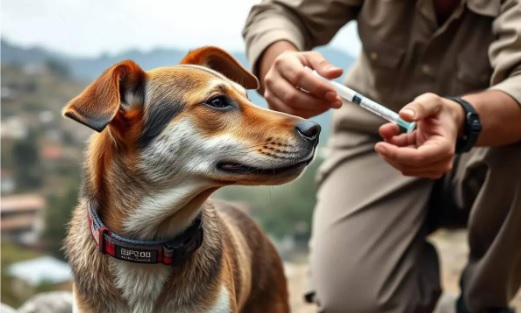(Prelims: Current Affairs)
(Mains, General Studies Paper- 2: Issues arising out of government policies and interventions for development in various sectors and their design and implementation) |
Context
The Delhi government has launched an ambitious scheme for rabies control and stray dog management. Under the scheme, about 10 lakh stray dogs will be microchipped in the next two years.

Background
- On August 22, 2025, the Supreme Court modified its suo motu order of August 11.
- The first order had directed the capture and relocation of stray dogs from public places in the National Capital Region (NCR).
- In the modified order, the court said that the dogs should be released back at the same place from where they were captured after sterilization and vaccination.
- The decision reflects a balance between animal welfare and human safety which is in line with Delhi's plan
Delhi Government's Rabies Control Plan
- Delhi Development Minister Kapil Mishra announced that a comprehensive plan for rabies control will be implemented in Delhi.
- The initiative has been launched in collaboration with the United Nations Development Programme (UNDP).
- The decision to launch the scheme was taken at a meeting of the Delhi Advisory Animal Welfare Board.
Objectives
- To reduce cases of rabies, which is mostly spread by dog bites.
- Use of microchips to control dog population and monitor their health status
- Prevent dog bite incidents and keep people safe
- Accurate counting of dogs and digitizing their vaccination and sterilization records
Features
- Microchipping: Around 10 lakh stray dogs will be microchipped, the cost of which will be around ₹200 per chip. These chips will store the vaccination and sterilisation records of dogs.
- Handheld scanners: Scanners costing ₹4,000 will be procured to read data from the chips.
- Dog census: Dog census will be conducted as soon as possible for accurate data and better planning.
- Pet shop registration: Registration of pet shops will be made mandatory, for which a monitoring committee will be formed.
- Awareness campaign: Awareness about rabies control and microchipping will be raised through social media.
- Local surveillance: Each regional committee will be activated to ensure monitoring and action at the local level.
Impact
- Improved public health: Rabies cases will decrease, which will be beneficial for both humans and animals. This year, 26,334 dog bite cases have been reported in Delhi and 49 rabies cases by 31 July 2025.
- Better management of stray dogs: Microchips will make it easier to monitor the health status and population of dogs, making sterilisation and vaccination more effective.
- Ethical approach: The scheme promotes animal welfare, as it focuses on the health and management of dogs rather than killing them. It encourages coexistence between humans and animals.
- Social awareness: The use of social media will make people more aware of rabies and animal management, increasing community participation.
Bengaluru example
- This type of scheme is being implemented in Bengaluru to control the stray dog population.
- The animal husbandry department of the Bruhat Bengaluru Mahanagara Palike (BBMP) has planned a ₹60 crore plan for 2025-26.
- 500 stray dogs were microchipped under a pilot project, and now tenders worth ₹3.23 crore are being prepared.
- This model can be an inspiration for Delhi, as it shows that dog management and rabies control is possible through microchipping.
|


